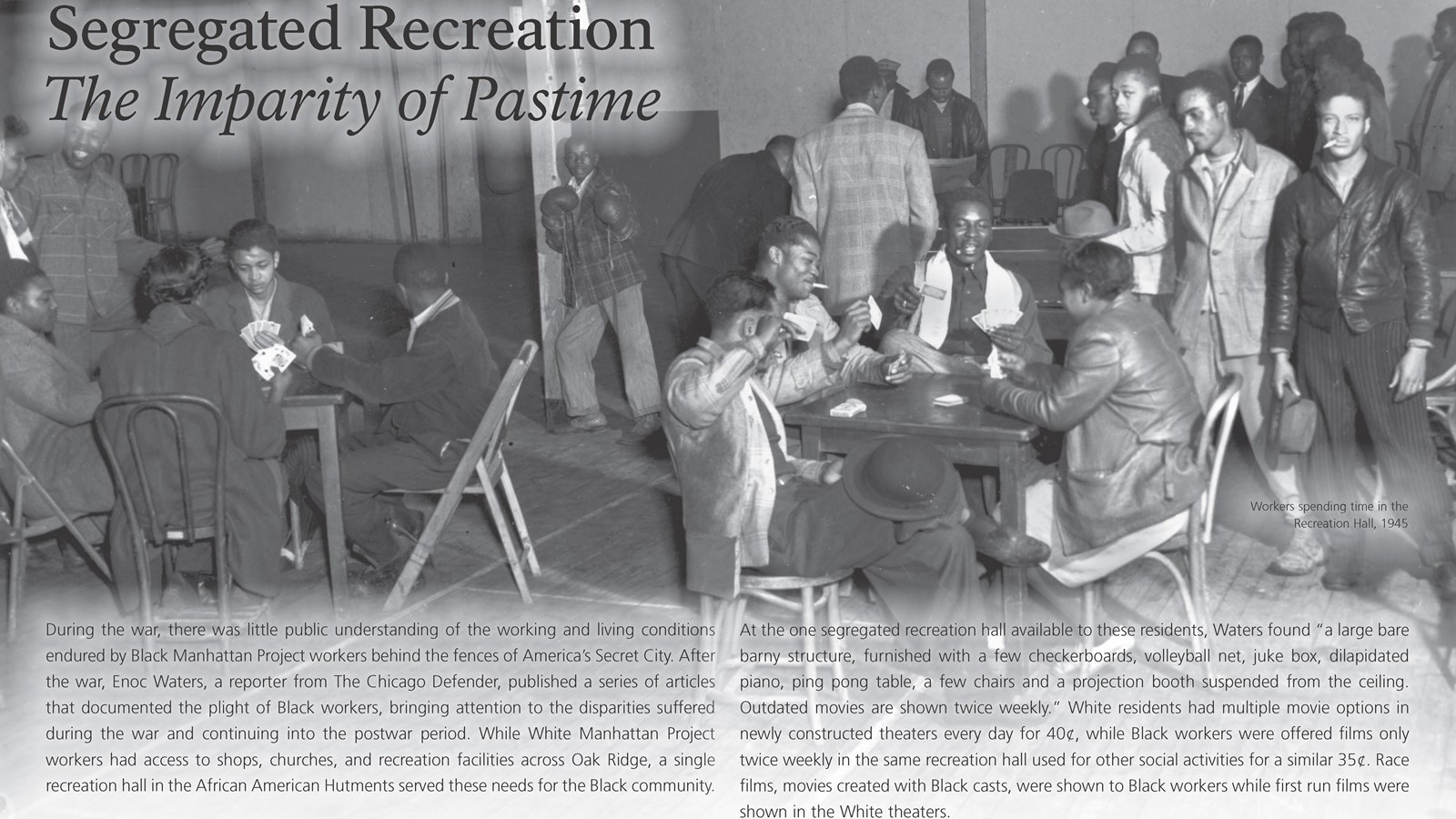Last updated: March 12, 2025
Place
Oak Ridge Wayside: Segregated Recreation

NPS
Quick Facts
Amenities
1 listed
Historical/Interpretive Information/Exhibits
Subtitle
The Imparity of Pastime
Main Text
During the war, there was little public understanding of the working and living conditions endured by Black Manhattan Project workers behind the fences of America’s Secret City. After the war, Enoc Waters, a reporter from The Chicago Defender, published a series of articles that documented the plight of Black workers, bringing attention to the disparities suffered during the war and continuing into the postwar period. While White Manhattan Project workers had access to shops, churches, and recreation facilities across Oak Ridge, a single recreation hall in the African American Hutments served these needs for the Black community.
At the one segregated recreation hall available to these residents, Waters found “a large bare barny structure, furnished with a few checkerboards, volleyball net, juke box, dilapidated piano, ping pong table, a few chairs and a projection booth suspended from the ceiling. Outdated movies are shown twice weekly.” White residents had multiple movie options in newly constructed theaters every day for 40¢, while Black workers were offered films only twice weekly in the same recreation hall used for other social activities for a similar 35¢. Race films, movies created with Black casts, were shown to Black workers while first run films were shown in the White theaters.
Exhibit Panel Description
A black and white exhibit panel on a black frame approximately four feet tall. The panel has a black band at the top and a title underneath that reads “Segregated Recreation: The Imparity of Pastime." The center of the panel includes a black and white photo of several Black workers enjoying a recreation hall. The text of the panel is located at the bottom.
Visit this Exhibit Panel
This wayside is located at 445 S. Illinois Ave. Oak Ridge, TN 37830.
The Imparity of Pastime
Main Text
During the war, there was little public understanding of the working and living conditions endured by Black Manhattan Project workers behind the fences of America’s Secret City. After the war, Enoc Waters, a reporter from The Chicago Defender, published a series of articles that documented the plight of Black workers, bringing attention to the disparities suffered during the war and continuing into the postwar period. While White Manhattan Project workers had access to shops, churches, and recreation facilities across Oak Ridge, a single recreation hall in the African American Hutments served these needs for the Black community.
At the one segregated recreation hall available to these residents, Waters found “a large bare barny structure, furnished with a few checkerboards, volleyball net, juke box, dilapidated piano, ping pong table, a few chairs and a projection booth suspended from the ceiling. Outdated movies are shown twice weekly.” White residents had multiple movie options in newly constructed theaters every day for 40¢, while Black workers were offered films only twice weekly in the same recreation hall used for other social activities for a similar 35¢. Race films, movies created with Black casts, were shown to Black workers while first run films were shown in the White theaters.
Exhibit Panel Description
A black and white exhibit panel on a black frame approximately four feet tall. The panel has a black band at the top and a title underneath that reads “Segregated Recreation: The Imparity of Pastime." The center of the panel includes a black and white photo of several Black workers enjoying a recreation hall. The text of the panel is located at the bottom.
Visit this Exhibit Panel
This wayside is located at 445 S. Illinois Ave. Oak Ridge, TN 37830.
